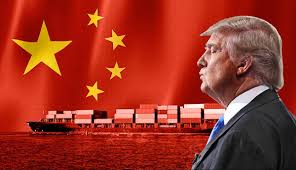
SHIPPING: Most carriers will not add surcharges or service fees to offset USTR port charges
NEW YORK: New port charges from the US Trade Representative (USTR) for Chinese-built and China-based operators are set to take effect on 14 October, and several carriers have announced that they will not implement surcharges or service fees to offset the additional costs.
So far, ocean carriers ONE (Ocean Network Express), HMM, CMA CGM, and Maersk have told customers that they will not add additional charges.
HMM and ONE also said they will not adjust US port rotations or customers’ existing service plans.
ONE said they will continue to closely monitor the regulatory changes and provide immediate updates should new information become available.
CMA CGM said it has used the 180 days since the announcement to implement a robust and adaptive contingency plan.
“We currently expect to both maintain our service coverage to all scheduled US ports and minimize any impacts of the upcoming USTR fees,” the company said in a notice to customers. “Despite the challenges this new service fee may create for our operations, based on the current structure and applicability of the service fee, CMA CGM does not plan to implement a surcharge at this time to cover USTR-related fees as currently structured.”
It is more difficult for Chinese carriers such as COSCO.
COSCO said it remains confident in its ability to ensure stable and reliable services in the US.
“At the same time, we are actively enhancing our product portfolio to meet the evolving demands of the US market,” COSCO said. “We will maintain competitive rates and surcharges, along with related policies that align with market conditions.”
China’s Hede Shipping is impacted by the new USTR regulation since, as a Chinese company, they cannot avoid significant fees on all their operated vessels when calling the US.
They have announced a closure of their HDS2 Pacific service leaving only their HDS in place on the Pacific.
Some companies are looking at other ways to avoid the new USTR charges.
Seaspan, which is the world’s largest charter owner of container vessels, moved their headquarters from Hong Kong to Singapore effective 1 October and is planning to reflag about 100 vessels to the Singaporean flag.
“This is the largest direct impact we have seen of the coming USTR fees which applies to Chinese built, owned and operated vessels,” Lars Jensen, president of consultant Vespucci Maritime, said.
CHINA ANNOUNCES COUNTER MEASURES
Jensen said China issued new rules on maritime transport which appear to have the purpose of retaliating against the USTR fees.
“Under the revised regulations, China will take necessary countermeasures against countries or regions that impose or support discriminatory bans, restrictions, or similar measures targeting Chinese operators, vessels, or crew engaged in international maritime transport and related services,” the Chinese government said, noting that its new rules went into effect on 28 September.
These measures could potentially include:
• Fees on vessels when calling at Chinese ports
• Blocking or restricting vessels’ port access in China
• Blocking or restricting organizations or individuals from accessing China-related maritime data or from engaging in international shipping and related services to and from Chinese ports.
“Such measures will be enacted unless relevant treaties or agreements offer adequate and effective remedies, according to the decree,” the Chinese government said.
QUESTIONS REMAIN CONCERNING USTR FEE STRUCTURE
In relation to the USTR rules Jensen said questions have been raised to USTR regarding details of the practical implementation.
In a note, the USTR has responded to some of the bodies making the inquiries.
“We are working to provide additional clarity to outstanding questions raised by stakeholders,” the USTR said. “We are aware of the upcoming 14 October fees and working diligently to release this information in advance.”
Container ships and costs for shipping containers are relevant to the chemical industry because while most chemicals are liquids and are shipped in tankers, container ships transport polymers, such as polyethylene (PE) and polypropylene (PP), are shipped in pellets. Titanium dioxide (TiO2) is also shipped in containers.
They also transport liquid chemicals in isotanks.
Source: ICIS
